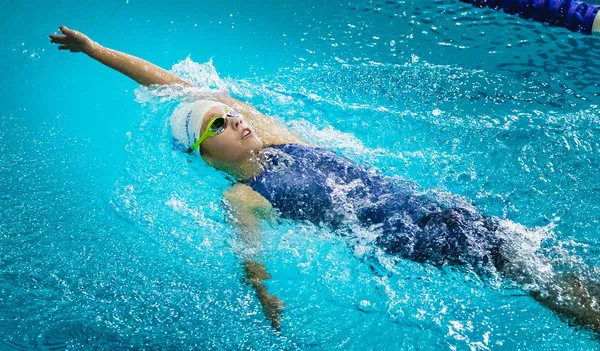Swimming is not only a great way to stay fit but also a vital life skill. Among the various swimming strokes, the backstroke offers a unique experience, allowing swimmers to glide effortlessly through the water while enjoying the sensation of lying on their backs. Mastering the backstroke requires attention to technique and practice. In this comprehensive guide, we’ll break down the backstroke into manageable steps, helping swimmers of all levels improve their skills and confidence in the water.
Step 1: Body Position
The foundation of a successful backstroke lies in maintaining the correct body position. Start by floating on your back, keeping your body parallel to the surface of the water. Ensure your head is in a neutral position, with your eyes looking straight up or slightly backward. Keep your ears submerged and your chin tilted slightly toward your chest. Engage your core muscles to maintain stability and buoyancy.
Step 2: Arm Movement
Once you’ve mastered the proper body position, focus on your arm movements. Begin with your arms extended straight above your head, shoulder-width apart. Initiate the stroke by sweeping your arms outward in a circular motion, keeping your elbows straight. As your arms move outward, bend your elbows and bring your hands down toward your hips in a relaxed, S-shaped motion. Finish the stroke by pushing your hands past your hips and out of the water, before returning them to the starting position above your head. Remember to maintain a continuous and fluid motion, avoiding any jerky movements that can disrupt your rhythm.
Step 3: Kick Technique
A strong and steady kick is essential for propulsion in the backstroke. Start by positioning your legs hip-width apart, toes pointed slightly outward. Flutter your legs in an alternating motion, with small, quick kicks originating from your hips. Keep your knees relaxed and your ankles flexible, allowing for a fluid and efficient kick. Focus on generating power from your hips while keeping your legs near the surface of the water to minimize drag. Avoid excessive splashing and aim for a smooth, rhythmic kick that complements your arm movements.
Step 4: Breathing
Unlike other strokes, breathing in the backstroke is relatively straightforward since your face remains above the water throughout the entire stroke. However, it’s essential to establish a breathing rhythm to ensure optimal oxygen intake and overall comfort. Coordinate your breathing with your arm movements, inhaling as your arms sweep outward and exhaling as they return to the starting position above your head. Experiment with different breathing patterns to find what works best for you, whether it’s breathing every stroke or every other stroke. Consistency and relaxation are key to maintaining a steady breathing pattern while swimming backstroke.
Step 5: Coordination
Achieving smooth coordination between your arms, legs, and breathing is crucial for efficient backstroke swimming. Focus on synchronizing your arm movements with your kick and breathing, ensuring a continuous and rhythmic motion. As your left arm pulls through the water, your right leg should kick, and vice versa, creating a balanced and propulsive stroke. Maintain a relaxed and streamlined body position, minimizing resistance and maximizing forward momentum. Practice gradually increasing your speed while maintaining proper technique, paying attention to any areas that may need improvement.
Step 6: Drills and Practice
Improving your backstroke technique requires dedicated practice and targeted drills. Incorporate drills such as arm-only or leg-only swimming to isolate and strengthen specific aspects of your stroke. Use equipment such as kickboards or pull buoys to focus on individual components while reducing fatigue. Experiment with different pacing and distances, gradually increasing the intensity as your proficiency improves. Consistent practice is key to refining your backstroke technique and building endurance in the water.
Step 7: Feedback and Adjustment
Seeking feedback from a qualified swim coach or experienced swimmer can provide valuable insights into areas for improvement. Consider recording yourself swimming backstroke to analyze your technique and identify any areas of weakness. Focus on making incremental adjustments based on feedback, whether it’s refining your arm positioning or fine-tuning your kick technique. Be patient and persistent, understanding that mastering the backstroke is a gradual process that requires time and effort.
Conclusion
Mastering the backstroke requires attention to detail, patience, and practice. By focusing on proper body position, arm movement, kick technique, breathing, coordination, and consistent practice, swimmers can improve their backstroke skills and confidence in the water. Incorporate targeted drills, seek feedback, and make gradual adjustments to refine your technique over time. With dedication and perseverance, you’ll soon find yourself gliding effortlessly through the water, enjoying the freedom and grace of the backstroke.

